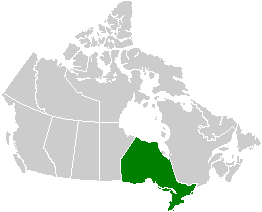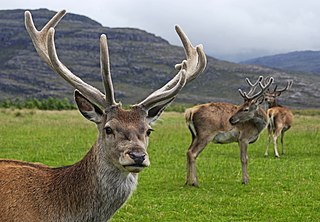Related Research Articles

Eswatini, officially the Kingdom of Eswatini and formerly named Swaziland, is a landlocked country in Southern Africa. It is bordered by Mozambique to its northeast and South Africa to its north, west, south, and southeast. At no more than 200 kilometres (120 mi) north to south and 130 kilometres (81 mi) east to west, Eswatini is one of the smallest countries in Africa; despite this, its climate and topography are diverse, ranging from a cool and mountainous highveld to a hot and dry lowveld.

Conservation in the Republic of Ireland is overseen by a number of statutory and non-governmental agencies, including those with responsibility for conservation of the built environment and conservation of the natural environment in Ireland. Conservation has sometimes been a contentious issue, with debates impacting its progress since the 1960s. Concrete initiatives are sometimes driven by European Union (EU) heritage protection and environmental policies, including EU environmental law, which – as a member – the Irish government is obliged to adopt and implement.
This page gives an overview of the complex structure of environmental and cultural conservation in the United Kingdom.

A nature reserve is a protected area of importance for flora, fauna, or features of geological or other special interest, which is reserved and managed for purposes of conservation and to provide special opportunities for study or research. They may be designated by government institutions in some countries, or by private landowners, such as charities and research institutions. Nature reserves fall into different IUCN categories depending on the level of protection afforded by local laws. Normally it is more strictly protected than a nature park. Various jurisdictions may use other terminology, such as ecological protection area or private protected area in legislation and in official titles of the reserves.
Local nature reserve (LNR) is a statutory designation for certain nature reserves in Great Britain. The Wild Life Conservation Special Committee established the and proposed a national suite of protected areas comprising national nature reserves, conservation areas, national parks, geological monuments, local nature reserves and local educational nature reserves.

Protected areas of Poland include the following categories, as defined by the Act on Protection of Nature of 16 April 2004, by the Polish Parliament:

Tourism in Belize has grown considerably recently, and it is now the second largest industry in the nation. Belizean Prime Minister Dean Barrow has stated his intention to use tourism to combat poverty throughout the country. The growth in tourism has positively affected the agricultural, commercial, and finance industries, as well as the construction industry. The results for Belize's tourism-driven economy have been significant, with the nation welcoming almost one million tourists in a calendar year for the first time in its history in 2012.
Hawane Nature Reserve was first established in 1978 to protect an area of marsh along the Mbuluzi River in Eswatini. This area included the natural habitat of Kniphofia umbrina, a rare Swaziland endemic red hot poker. When the Hawane dam was built in 1988 to provide Mbabane's water supply, the reserve was expanded to protect the surrounding wetlands. The reserve is managed by the Swaziland National Trust Commission.

Malolotja National Park covers 18,000 hectares of mountain wilderness on Eswatini's northwestern border with South Africa. The park includes Ngwenya Mountain, Eswatini's second highest mountain, and Malolotja Falls which drop 89 metres (292 ft), the highest in Eswatini. Habitats include short grassland to thick riverine scrub, bushveld and Afromontane forest.
The Eswatini Environment Authority, (EEA) is mandated to provide for and promote the protection, conservation and enhancement of the environment and the sustainable management of natural resources of Eswatini. It was created by the Swaziland Environment Act, 1992, and was transformed into a corporate body by The Environment Management Act, 2002. This latter act gives the SEA the power to halt developments that have not been adequately scrutinised for their environmental impact. It is a department of the Ministry of Tourism and Environmental Affairs.
Protected areas of Ukraine are special areas of Ukraine established with the goal of protecting the natural and cultural heritage of the country from excessive changes as a result of human activity. The protection of the areas is the responsibility of the government of Ukraine, specifically the Cabinet of Ministers of Ukraine.

IUCN protected area categories, or IUCN protected area management categories, are categories used to classify protected areas in a system developed by the International Union for Conservation of Nature (IUCN).

Archaeology and conservation of cultural resources in Ontario fall under the Ministry of Tourism, Culture and Sport. The Province of Ontario has created Acts to insure the protection archaeological and cultural resources. Acts such as the Ontario Heritage Act and Environmental Assessment Act provide the major legal documents that protect heritage and cultural resources. Additionally, Acts such as the Planning Act, the Aggregate Resource Act and the Ontario Cemeteries Act are also implemented when specific triggers occur during archaeological assessments.

Many parts of Scotland are protected in accordance with a number of national and international designations because of their environmental, historical or cultural value. Protected areas can be divided according to the type of resource which each seeks to protect. NatureScot has various roles in the delivery of many environmental designations in Scotland, i.e. those aimed at protecting flora and fauna, scenic qualities and geological features. Historic Environment Scotland is responsible for designations that protect sites of historic and cultural importance. Some international designations, such as World Heritage Sites, can cover both categories of site.

Klapperkop Nature Reserve is a nature reserve of some 460 ha in Pretoria, Gauteng, which was established in 1898. It is managed by the Department of Nature Conservation. Fort Klapperkop, completed in 1897, is situated inside the reserve. The reserve is named for the prominent Klapperkop, a hill vegetated with klapper trees on its northern slopes.

This article gives an overview of the structure of environmental and cultural conservation in Scotland, a constituent country of the United Kingdom.
References
- ↑ "The National Trust Commission Act, 1972". Swaziland National Trust Commission. Retrieved 5 May 2012.
- ↑ "Ministry of Tourism and Environmental Affairs - Departments and Parastatals". The Government of the Kingdom of Swaziland. Retrieved 5 May 2012.
- ↑ "Cultural Resources: National Monuments". Swaziland National Trust Commission. Retrieved 5 May 2012.